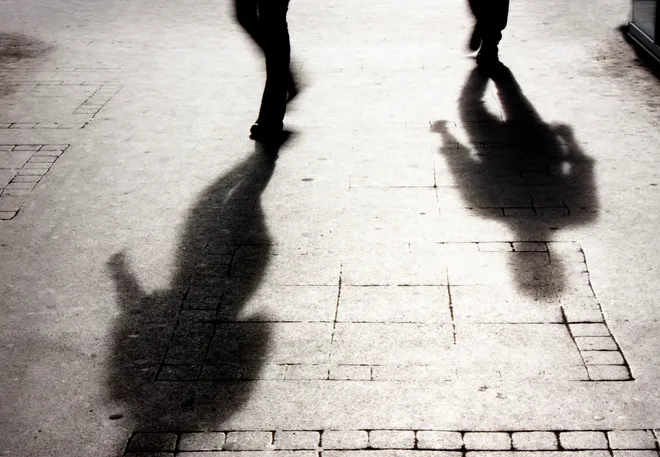What 'The Red Zone' on college campuses teaches us about sexual assault
College students are gearing up to return to campus, with tens of thousands arriving for the first time. New classes, friends, environments and routines await.
But something else also comes along with back-to-school on college campuses – and it's what's known as "The Red Zone," the period of time between the first day students arrive on campus through Thanksgiving break. Research has revealed this is when 50% of sexual assaults on campuses occur. College freshmen or incoming transfer students are particularly vulnerable to assault, given their naïveté when it comes to partying.
While opinions differ on "The Red Zone" and whether it's best to emphasize its importance – other research has questioned the importance of this time frame – experts agree more needs to be done to educate all those on college campuses about sexual assault and consent.
"College campuses shouldn’t necessarily just ramp up general sexual violence prevention efforts from August to November," says Sam Judd, youth prevention specialist at the Rape Recovery Center. "If anything, they should be targeting specific risk factors during those months."

'The biggest misconception' about 'The Red Zone' and sexual assault
The first few months at school is a critical period in a new college student's development on campus.
They are more vulnerable "because first-year college students lack strong social ties that can offer them safer spaces to socialize – like house parties with a group of trusted friends," says sociologist Nicole Bedera.
Some started calling this period "The Double Red Zone" in 2021 and 2022, given that the COVID pandemic thwarted students' ability to start their freshman years on campus the traditional way.
None of this means "The Red Zone" should be the only time people are concerned about sexual assault. Out of all college students, 13% are raped or sexually assaulted by physical force, violence or incapacitation, according to statistics gathered by RAINN.
"The biggest misconception people have about 'The Red Zone' is that it can stand alone as a trend in rates of reported sexual assault without any context or further investigation into risk factors," Judd says. "There may be many reasons that campuses often see higher reporting during this time period – and it might not even be that students are experiencing more sexual assault."
For example, Judd says, after the first few months on campus, fewer people may be comfortable reporting abuse because they fear retaliation from now-established social circles. And Judd speculates reporting may also dwindle after the "Red Zone" period because people lose energy to "interact with systems they have discovered are ineffective," such as college disciplinary boards.
What can schools do?
Kenyora Lenair Parham, executive director of End Rape on Campus, says it's on the schools to provide education and awareness about what to expect and what types of behaviors are not tolerated on college campuses. They also must provide students with support mechanisms so they know where to turn if they ever endure sexual assault: what to do, where to go, who to speak to. This ideally wouldn't be the first time they've heard of these topics.
"I like to believe it's not something that should start in college, but actually should be implemented through even the K-through-12 space," Lenair Parham says.
The key is teaching the meaning of consent: "Teaching young people of all genders the importance of consent, effective ways to get involved as bystander, and which resources are available to them for treatment are all ways to create healthier environments for students," says Halle Nelson, communications specialist at the National Sexual Violence Resource Center.
In case you missed:Rape at college: Why back to school is so dangerous for women
What can students do?
Look to prevention organizations for safety advice. End Rape on Campus, for example, has a Campus Accountability Tool that allows students and survivors to check out individual colleges' sexual assault investigation policies, prevention work and survivor support resources.
But sexual assaults ultimately come down to individual decision-making on the part of the potential abusers.
"Not only is it difficult to task students with preparing for something about which they may not know anything, but it can also be harmful to place the expectation on students – often women – to protect themselves and prevent others from sexually assaulting them, ultimately leading to victim-blaming attitudes," Judd says.
That said, people "can practice and increase their skills and confidence in asserting their romantic and sexual boundaries and in using bystander intervention techniques. And they can normalize conversations about consensual and non-consensual sexual activity among their peers, which is the most effective form of sexual violence mitigation."
On the legal front, some confusion lies exactly when the Biden administration's Title IX policies will be fully implemented; whether President Trump or President Biden's policy is in effect may make someone question whether they wish to disclose or not (explore policy differences here).
"Our hope is that we're getting to as many students as much as possible in order to make sure that they understand their rights under the law, as well as what to expect with these new Title IX regulations," Lenair Parham says.
If you are a survivor of sexual assault, RAINN offers support through the National Sexual Assault Hotline (800.656.HOPE & online.rainn.org).
Important:'The most intense violation of my life': A beloved camp, a lost boy and the lifelong impact of child sexual trauma
Disclaimer: The copyright of this article belongs to the original author. Reposting this article is solely for the purpose of information dissemination and does not constitute any investment advice. If there is any infringement, please contact us immediately. We will make corrections or deletions as necessary. Thank you.







